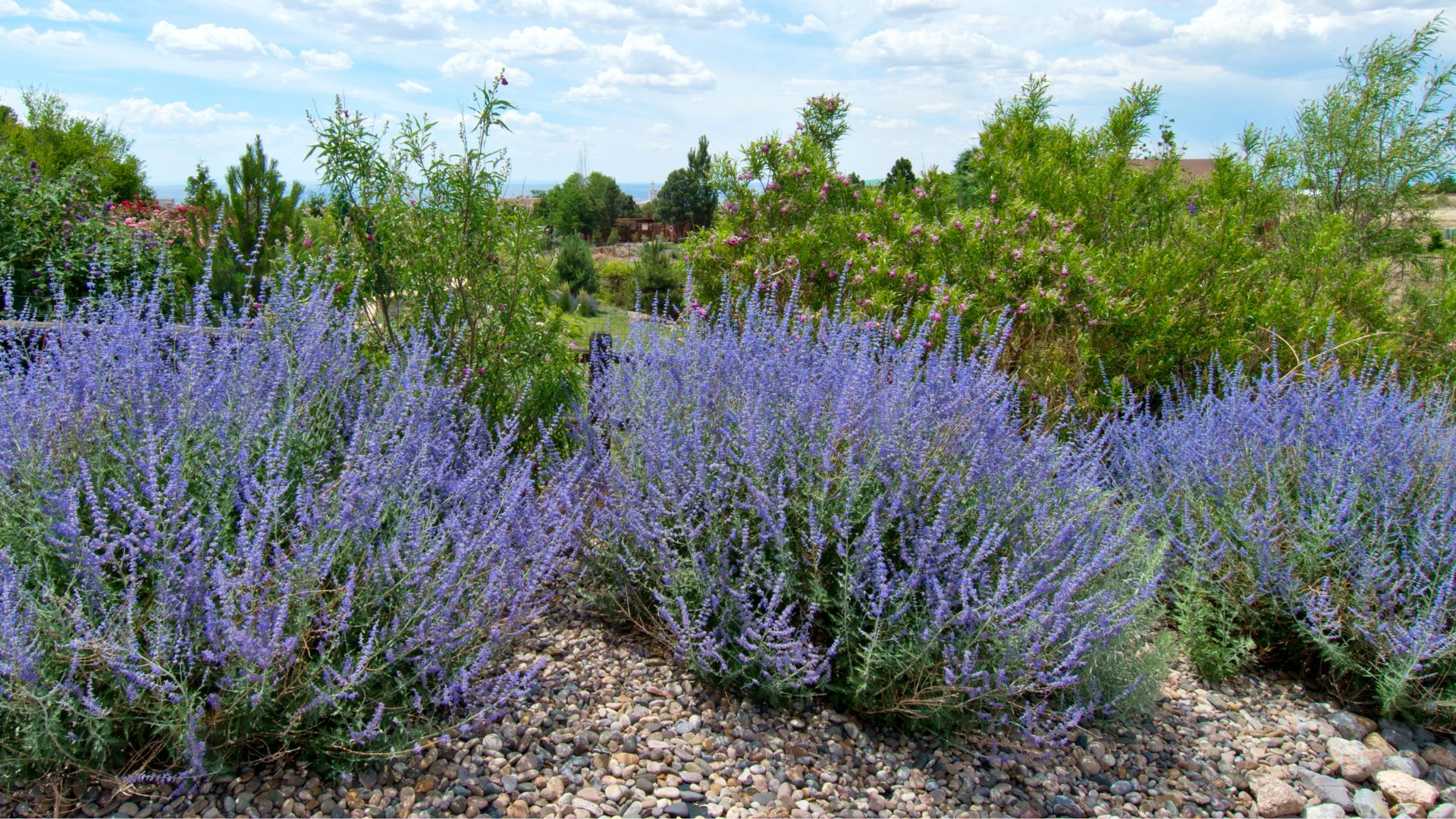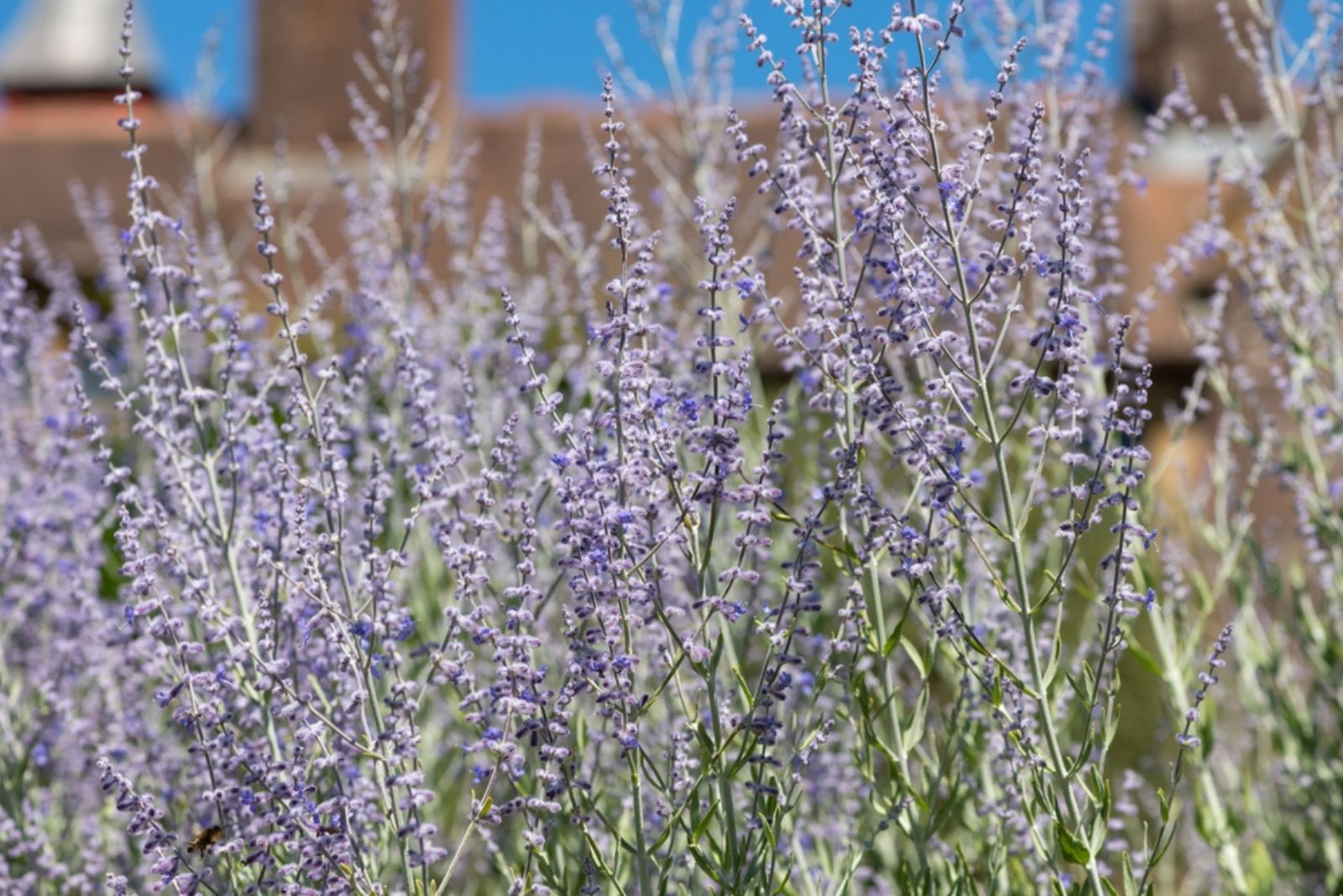Russian sage is a drought-resistant shrub that has become a garden staple in arid climates, just like lavender.
It has amazingly scented foliage and gorgeous flower spikes that attract numerous pollinators – bees and butterflies especially.
This bush can also repel pests with its fragrance and you can plant a couple of them to form a hedge.
Russian sage can last for a long time, but only if you maintain it properly; and that includes regular pruning. This practice will prevent your plant from becoming woody and keep it flowering year after year.
And the key to correct cutting back is knowing when to do it.
Let’s get started!
When To Prune Russian Sage
You can trim Russian sage at the beginning of spring and sometime in fall, and each approach has its advantages.
Here they are!
Spring Trimming
Most growers prune their Russian sage in early-to-mid-spring, a little before or just after it starts waking up from dormancy.
You can shape it a bit during this time, remove dry and winter-damaged branches, and trim about one third of it to control its growth since it can overtake your landscape.
This spring cutting back will encourage your shrub to produce new growth, make it bushier, promote more blossoms in summer, and at the same time control its shape and size.
Spring trimming will allow you to make cuts without harming the delicate new growth. And it gives your Russian sage more than enough time to get over this shock well before it starts flowering.
Additionally, uncut shoots will keep the crown of your plant safe from the winter cold and give your plant a higher chance of survival.
Another reason why so many gardeners opt for spring pruning is that the uncut stems of this shrub provide a winter aesthetic, especially when brushed with early frost and first snow. They will give your winter garden more structure and texture.
Finally, Russian sage goes to seed after it finishes flowering in October and your local birds will appreciate this food source during winter.
Fall Trimming
Russian sage is on our list of plants you should never cut back in fall, and yet, there are some instances when you can do this, although you have to be extra careful.
If your shrub has become floppy, is seeding uncontrollably, and is simply unattractive, you can safely prune it in fall.
However, wait until your Russian sage goes dormant and all its leaves fall off. This will prevent your plant from producing new growth, which can quickly get damaged by winter cold and hurt your entire plant.
Cutting back this shrub down to 6-12 inches tall can also protect its old growth from breakage, especially if you live in a windy or snowy area.
Just make sure you never remove more than one third of the entire plant because that can harm it and make it less hardy and tolerant of winter conditions.
Still, the best Russian sage pruning time is in spring or even late winter, so try to postpone this chore until then if possible.
How Often You Should Chop Down Your Russian Sage
I highly recommend pruning your Russian sage every year because it will keep it in check and prevent it from spreading in your garden too much.
It will also give it a nice shape and won’t give you the feeling of a wild garden.
Also, annual pruning will promote more new growth, make your plant bushier, and encourage it to produce gorgeous blossoms in summer.
Can You Prune It In Summer?
You certainly can do some light pruning in summer to shape up your plant, encourage it to produce new growth, and make it bushier, but don’t get ahead of yourself.
This is not the ideal trimming time and high temperatures and plenty of sun can have your plant going through a lot of shock, so make sure to remove the tips and nothing more than that.
Of course, don’t forget to remove dead, diseased, damaged, or broken branches during this period. You can do this any time of the year to help your plant.
Russian sage is just one of the plants that look like lavender and can give your garden a Mediterranean look. It will attract hundreds of beneficial bugs, keep your yard fragrant, and won’t give you too much work. Just remember to prune it every year, and you’re good to go!



